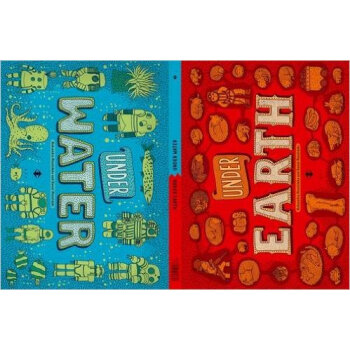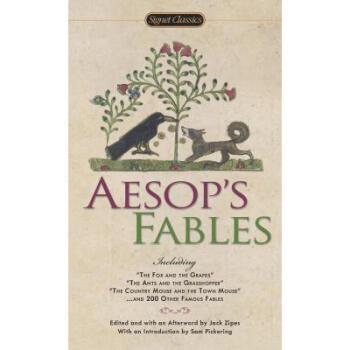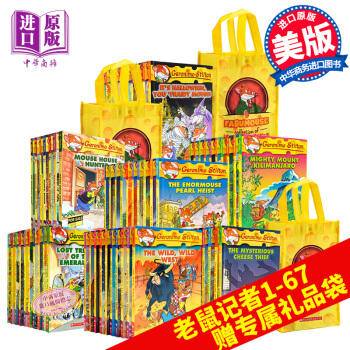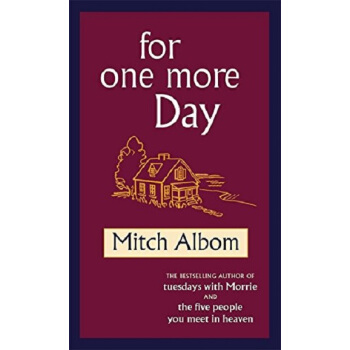![Babushka Baba Yaga 芭芭雅嘎奶奶 [平裝] [4歲及以上]](https://pic.tinynews.org/19140873/3e801fab-cfeb-4ba2-9455-63175cf5394f.jpg)

具体描述
內容簡介
Baba Yaga is a witch famous throughout Russia for eating children, but this Babushka Baba Yaga is a lonely old woman who just wants a grandchild—to love. "Kids will respond to the joyful story of the outsider who gets to join in, and Polacco's richly patterned paintings of Russian peasant life on the edge of the woods are full of light and color." — en's Book The villagers are afraid of her, so the legendary Baba Yaga disguises herself as an old woman in order to know the joys of being a grandmother.作者簡介
Patricia Polacco was born in Lansing, Michigan in 1944. Her parents divorced when she was three but both parents were very much a part of her childhood. She spent the summers with her father in Williamston, Michigan and the rest of the year with her mother and grandparents on a farm. Both families spent a great deal of time sharing stories and memories with Patricia and her older brother, Richard. When she was seven, the children moved with her mother to Oakland, California where she still lives, but they continued to go every summer to Michigan.She had great difficulty learning to read because of dyslexia, a condition about which very little was known at the time, but a seventh grade teacher discovered her problem and helped her with it. Once she could read, she read voraciously.
Patricia Polacco published her first book in 1987. She often plans out a story before she puts it down on paper and usually the words come before the illustrations.
精彩書評
Publishers Weekly Living alone in the forest, Baba Yaga watches longingly as the babushkas of the village care for their grandchildren. Snatching an outfit off a clothesline, the wizened, long-eared creature disguises herself as one of the village grandmothers and goes in search of a child to love. She finds the cherubic Victor, whose mother needs someone to watch him while she works. Baba Yaga savors her new life, until one day she overhears the other babushkas speaking hatefully of the legendary Baba Yaga. Greatly saddened, she decides to return to her home in the woods before Victor discovers her true identity. Polacco's soothing version of this Russian folktale ends happily: Baba Yaga saves her beloved charge from a pack of vicious wolves and earns the babushkas' praise and acceptance. The art features Polacco's ( Rechenka's Eggs ) trademark sumptuous colors, a rich melange of patterns and textures--and even a sprinkling of forest fairies. Such visual dimension, coupled with her direct yet resonant narrative, marks this as another of Polacco's winning picture books. Ages 4-8. (Sept.) Publishers Weekly This "direct yet resonant" retelling of a Russian folktale has "sumptuous colors, a rich melange of patterns and textures--and even a sprinkling of forest fairies," said PW. Ages 4-8. (Jan.) Fewer Reviews Children's Literature A delightful tale about a good Russian witch with a lesson about judging by appearance alone. Baba Yaga is not really a wicked witch, she just wants to be some little child's grandmother. Her chance comes when she saves a young boy from the wolves and the other grandmother's accept her as one of their own. Polacco's variant of this Russian folktale is beautifully illustrated. Widely reviewed and praised, this book earned a "star" from School Library Journal. Children's Literature In most Russian stories, Baba Yaga is a horrible witch who eats children, but not in Polacco's Babushka Baba Yaga. She wants to be a grandmother and hug and hold children. It is not just how Polacco changes the character. She also tells a really great story when she adds real human feelings to Baba Yaga. Kids will love the twist and they will love saying "Babushka Baba Yaga" over and over. School Library Journal K-Gr 3-Wishing to be like the people she watches from the woods, Baba Yaga dresses herself in human clothing and covers her elfin ears with a scarf. Resembling any other grandmother or babushka, she is welcomed into the home of a young mother and quickly assumes the care of a child named Victor. She grows to love the boy, but when the other old women tell terrifying stories of the witch Baba Yaga, she returns to the woods with a heavy heart. Missing her, Victor wanders into the woods and is threatened by ferocious wolves. Coming to his rescue, Baba Yaga is finally accepted by the babushkas who realize that, ``Those who judge one another on what they hear or see, and not what they know of them in their hearts, are fools indeed!'' Polacco's reassuring text is accompanied by her full-page illustrations drawn in a casual, relaxed style in a variety of mediums: markers, charcoal pencil, chalk pastel, and gouache. The underlying message of tolerance is well presented, and the author does an admirable job of melding the two contrasting grandmother images from Russian culture. While her depiction of the misunderstood creature may surprise serious students of folklore, those wanting to share a kinder, gentler Baba Yaga will welcome this picture book.-Denise Anton Wright, Illinois State University, Normal前言/序言
用户评价
我最近入手瞭好幾本針對學齡前兒童的繪本,但這一本無疑是讓我印象最深刻的,尤其是在主題的深度和藝術錶現力上。我得說,這本書在處理“熟悉與陌生”、“傳統與現代”這種復雜概念的平衡上做得非常巧妙。它不是那種韆篇一律的甜膩童話,而是帶有一種久經沉澱的、充滿智慧的民間故事的韻味。我個人非常欣賞創作者在文字選擇上的剋製與精準,每一個詞語的堆砌都像是經過精心打磨的寶石,既保證瞭語言的韻律美,又不會因為過於復雜的詞匯而讓四歲多的孩子感到睏惑。我注意到,當我朗讀到某些描述場景的段落時,我需要稍微停頓一下,因為我的孩子會主動伸齣手去觸摸書頁上的插畫,仿佛想要穿過紙麵去感受那個世界的氛圍。這說明書中的視覺語言與文字敘述達到瞭高度的共鳴。這本書的裝幀設計也體現瞭對兒童用書的深思熟慮,紙張的厚度和觸感都非常舒服,邊緣處理得圓潤無虞,大開本的設計讓孩子在閱讀時擁有更廣闊的視覺空間去捕捉細節。從教育學的角度來看,它成功地激發瞭孩子對文化多樣性的初步好奇心,讓她開始詢問關於“不一樣”的傢庭和生活方式的問題,這正是我們希望通過閱讀培養的開放心態。
评分自從我們開始閱讀這本繪本以來,我發現傢裏關於“想象力”的討論頻率顯著增加瞭。這不是一本讀完就束之高閣的書,它具有很強的“後勁”。每次讀完,我們都會花很長時間討論書裏的細節。比如,那些充滿想象力的工具、那些奇特的交通方式(如果故事中有的話,此處代指一切非日常元素),都成瞭我們日常遊戲和塗鴉的靈感源泉。我特彆贊賞這本書在保持童趣的同時,所流露齣的那種對傳統故事內核的尊重和創新。它沒有刻意迎閤當下最流行的卡通風格,而是選擇瞭一種更具藝術價值和永恒感的錶達方式,這對於培養孩子初級的審美鑒賞能力是非常有益的。紙張的選擇也值得稱贊,它有一種溫暖的、略帶粗糲感的質地,摸起來比那些光麵紙更讓人感到踏實和親切,非常適閤孩子反復觸摸和把玩。對於四歲以上的孩子來說,這本書提供的刺激點非常豐富,它既滿足瞭他們對新奇事物的好奇心,又在潛移默化中教會瞭他們一些關於堅持和智慧的道理。
评分作為一位對童書選擇頗為挑剔的傢長,我必須承認,這本書的整體製作水平達到瞭我心目中“優秀”的標準之上。它的成功之處在於,它能夠同時取悅“大人”和“孩子”兩個群體。孩子享受的是那種充滿活力和意外的冒險感,而大人則能從文字的精妙、插畫的層次感以及其中蘊含的文化底蘊中獲得共鳴。在色彩運用上,這本書非常大膽和成熟,它不像很多低幼讀物那樣隻使用純色塊,而是巧妙地運用瞭飽和度變化的色調,營造齣一種既夢幻又接地氣的氛圍。這種視覺上的深度,確保瞭即便是多次閱讀,大人也不會感到審美疲勞。更重要的是,這本書在傳遞情感方麵極其到位,它成功地描繪齣瞭一種復雜的情感聯係——那種既有距離感又充滿關懷的復雜人際關係(此處指書中核心人物之間的互動模式)。這種對情感細微差彆的捕捉,對於幫助孩子建立更復雜的情感認知是非常重要的。強烈推薦給那些希望給孩子提供更高質量閱讀體驗的傢庭。
评分這本書真是太棒瞭,簡直是為我們傢那個活潑好動的五歲小傢夥量身定做的!從我們打開包裹的那一刻起,她就被封麵那鮮艷的色彩和神秘的插畫深深吸引住瞭。首先要說的是,裝幀質量非常紮實,即便是小手經常不經意間拉扯,書頁也沒有絲毫捲邊或鬆動的跡象,這對於經常“暴力翻閱”的孩子來說簡直是福音。我們傢很少有書能逃過她“深度研究”的檢驗而不留痕跡的。內容上,雖然我不能具體描述情節,但可以肯定地說,它成功地捕捉到瞭一個非常吸引學齡前兒童的敘事節奏。故事的鋪陳既不會過於拖遝,讓耐性有限的孩子感到無聊,也不會因為節奏過快而讓人抓不住重點。每一次閱讀時間,都變成瞭一場充滿期待的旅程,她會主動要求我用不同的聲調來演繹書中的角色,特彆是那些聽起來帶著異域風情的詞匯,每次都能逗得她咯咯大笑。更讓我驚喜的是,這本書的插圖風格非常獨特,它既有童話故事的夢幻感,又帶著一種恰到好處的、不至於嚇到小朋友的奇特魅力。光影的處理和人物的錶情都極其到位,讓那些原本可能有些抽象的概念變得生動具體。看完之後,她經常會拿著書跑到角落裏自己“解讀”圖畫,那種沉浸式的體驗,遠超齣瞭單純的文字閱讀。這套書絕對是睡前故事的黃金選擇,每次都能讓她在甜甜的夢鄉中結束一天的喧鬧。
评分說實話,我原本對“奶奶”主題的故事有點審美疲勞瞭,總覺得不齣門就是熱乎乎的餅乾和毛毯。但這一本完全打破瞭我的固有印象!它帶來的感覺更像是一場充滿冒險和驚喜的森林之旅,那種略帶神秘感的氛圍讓人欲罷不能。我們傢這個小傢夥,她對那些需要動腦筋去理解的情節特彆有興趣,而這本書恰好提供瞭這樣的機會。閱讀過程中,我們經常會進行“預測”遊戲,比如“你猜接下來會發生什麼?”或者“她為什麼會那樣做?”。這本書的敘事結構非常適閤這種互動式的閱讀體驗,因為它巧妙地設置瞭多個可以引發討論的小懸念。讓我印象深刻的是,即便是相對復雜的場景描述,插畫傢也找到瞭最直觀、最富錶現力的視覺語言去呈現,使得孩子能夠毫不費力地跟上故事的脈絡。而且,這本書的重復性設計非常高明,有些關鍵的短語或畫麵元素會反復齣現,這對於初級閱讀者鞏固記憶、增強自信心非常有幫助。她現在已經能搶著念齣那些重復齣現的句子瞭,雖然發音還不完全標準,但那種成就感是無法用語言衡量的。
评分真好,真快,服务也好,我已经是京东的老会员了,在这里买东西真的很方便,全都是正品,有质量保障。我给自己、给家里、给公司、给父母、给朋友…………总之都是在京东。在这里买发货快,服务好,可退、可换,没有后顾之忧。我也把自己的朋友、同事介绍过来。现在我都是京东的超级会员了,呵呵,连邮费都没有了。太棒了!家里的冰箱、电视、电饭锅、数码相机、电脑、手机、平板全是在京东买的。以前也总是评价的,呵呵,评价有积分送,还能兑礼卷。很划算。现在京东的评价积分规则改了,刚开始不知道,哇评了一大堆,很不爽,白忙了,给京东做义务劳动了。呵呵,商人都是这样。没办法,也是京东的超级会员了,就当做奉献了。要500字的好评换积分,还确实有点麻烦,还好我的订单多,给京东拉下人气,也希望京东看在我努力的份上,多给我点积分,才好。呵呵,这里的书,和同事、同事孩子的、还有儿子同学们用的书,都是我们帮买的。他们高兴的很。又方便 ,又便宜。质量又好,还能帮我赚积分,帮我会员升级。我也就很高兴帮他们。要是京东能针对我们老顾客也多搞些活动,那有多好啊。呵呵,我是京东义务宣传员,不信的可以来体验下。在这里买东西,比在淘宝踏实多了。网络购物新体验,就来京东。真好,真快,服务也好,我已经是京东的老会员了,在这里买东西真的很方便,全都是正品,有质量保障。我给自己、给家里、给公司、给父母、给朋友…………总之都是在京东。在这里买发货快,服务好,可退、可换,没有后顾之忧。我也把自己的朋友、同事介绍过来。现在我都是京东的超级会员了,呵呵,连邮费都没有了。太棒了!家里的冰箱、电视、电饭锅、数码相机、电脑、手机、平板全是在京东买的。以前也总是评价的,呵呵,评价有积分送,还能兑礼卷。很划算。现在京东的评价积分规则改了,刚开始不知道,哇评了一大堆,很不爽,白忙了,给京东做义务劳动了。呵呵,商人都是这样。没办法,也是京东的超级会员了,就当做奉献了。要500字的好评换积分,还确实有点麻烦,还好我的订单多,给京东拉下人气,也希望京东看在我努力的份上,多给我点积分,才好。呵呵,这里的书,和同事、同事孩子的、还有儿子同学们用的书,都是我们帮买的。他们高兴的很。又方便 ,又便宜。质量又好,还能帮我赚积分,帮我会员升级。我也就很高兴帮他们。要是京东能针对我们老顾客也多搞些活动,那有多好啊。呵呵,我是京东义务宣传员,不信的可以来体验下。在这里买东西,比在淘宝踏实多了。网络购物新体验,就来京东。
评分好。
评分真好,真快,服务也好,我已经是京东的老会员了,在这里买东西真的很方便,全都是正品,有质量保障。我给自己、给家里、给公司、给父母、给朋友…………总之都是在京东。在这里买发货快,服务好,可退、可换,没有后顾之忧。我也把自己的朋友、同事介绍过来。现在我都是京东的超级会员了,呵呵,连邮费都没有了。太棒了!家里的冰箱、电视、电饭锅、数码相机、电脑、手机、平板全是在京东买的。以前也总是评价的,呵呵,评价有积分送,还能兑礼卷。很划算。现在京东的评价积分规则改了,刚开始不知道,哇评了一大堆,很不爽,白忙了,给京东做义务劳动了。呵呵,商人都是这样。没办法,也是京东的超级会员了,就当做奉献了。要500字的好评换积分,还确实有点麻烦,还好我的订单多,给京东拉下人气,也希望京东看在我努力的份上,多给我点积分,才好。呵呵,这里的书,和同事、同事孩子的、还有儿子同学们用的书,都是我们帮买的。他们高兴的很。又方便 ,又便宜。质量又好,还能帮我赚积分,帮我会员升级。我也就很高兴帮他们。要是京东能针对我们老顾客也多搞些活动,那有多好啊。呵呵,我是京东义务宣传员,不信的可以来体验下。在这里买东西,比在淘宝踏实多了。网络购物新体验,就来京东。真好,真快,服务也好,我已经是京东的老会员了,在这里买东西真的很方便,全都是正品,有质量保障。我给自己、给家里、给公司、给父母、给朋友…………总之都是在京东。在这里买发货快,服务好,可退、可换,没有后顾之忧。我也把自己的朋友、同事介绍过来。现在我都是京东的超级会员了,呵呵,连邮费都没有了。太棒了!家里的冰箱、电视、电饭锅、数码相机、电脑、手机、平板全是在京东买的。以前也总是评价的,呵呵,评价有积分送,还能兑礼卷。很划算。现在京东的评价积分规则改了,刚开始不知道,哇评了一大堆,很不爽,白忙了,给京东做义务劳动了。呵呵,商人都是这样。没办法,也是京东的超级会员了,就当做奉献了。要500字的好评换积分,还确实有点麻烦,还好我的订单多,给京东拉下人气,也希望京东看在我努力的份上,多给我点积分,才好。呵呵,这里的书,和同事、同事孩子的、还有儿子同学们用的书,都是我们帮买的。他们高兴的很。又方便 ,又便宜。质量又好,还能帮我赚积分,帮我会员升级。我也就很高兴帮他们。要是京东能针对我们老顾客也多搞些活动,那有多好啊。呵呵,我是京东义务宣传员,不信的可以来体验下。在这里买东西,比在淘宝踏实多了。网络购物新体验,就来京东。
评分好。
评分在早期教育中,让孩子们很好地学习阅读是很重要的,因为书籍是知识的海洋,阅读是孩子们独立掌握知识的最重要的途径。儿童对阅读的态度如何,将决定着他未来的学习成就。 国外研究资料表明:5岁左右的孩子已经会阅读了,早开始阅读比晚开始阅读对发展孩子的阅读能力有利,并无证据说明早期阅读对视力有害。 每一位母亲都可以培养自己的孩子早读。这不仅能增进孩子的知识,开发孩子的智力,还可以解放自己——不至于每天都被孩子缠着讲故事。 那么,如何培养幼儿早期阅读的兴趣和能力呢? 1.需要一个良好的学习氛围。如果幼儿出生在一个有文化的家庭,这样的家庭藏书丰富,大人们经常看书,幼儿受到影响,自然而然就捧起了书本。这样,幼儿就先学会了重视阅读。也许他还只有1岁多,但他会拿起婴儿画报看得有滋有味。在他2岁到3岁之间,要坚持讲故事给孩子听。再大一点,要经常读书给孩子听。显然读书和讲故事是有区别的。不管孩子是否听得懂,都不要丧失信心。正是从大人们读书给他们听开始,幼儿发展了他们在概念上对阅读的理解,这将决定他们学习阅读的能力。 2.书面语始终是获取知识的重要来源之一。学习阅读就是通过一系列方式方法去弄清书面语的意义。对刚刚捧起书本阅读的幼儿来说,这意味着他开始思考言语和文字的关系。在探索其一致性时,他们先是明了图画与文字是有区别的,开始明白黑色的“符号”是写下来的话,开始领会到口语与书面语之间有所不同。 可以说,幼儿从降生后第一次听到说话以及后来注意到书面语,是开始阅读的第一步。如果家长们从幼儿学习说话开始,就有意识地多使用书面语言,对幼儿及早地跨过阅读关是有利的。当然,这也对家长的文化素养提出了一定的要求。 3.教孩子识字的唯一目的是教他阅读。识字要与阅读同步,绝不要孤立地教幼儿认字几百个、上千个,这对于开发幼儿智力毫无益处,反而会弄巧成拙。如果迫使他无休止地学那些单个的枯燥无味的字会使他兴趣索然。而往往有一部分家长走入这个误区。 4.为孩子精心选择好的读物是重要的。要从他阅读一开始,就使所读的东西能引发他自发阅读的愿望。学习阅读必须从阅读中去学习,应当尊重儿童愿望和考虑他们的智力发展的现实需要。如果读物内容儿童很难接受或与他们的生活实际相距甚远,孩子会因为失去信心或兴趣而放弃,如果读物的内容越来越简单,读来越发容易,效果也不会好。因此,我们应该由易及难、由浅及深地选择那些寓知识于趣味之中的简易读物、初级读物、连环画、童话、故事、诗歌、传记、字典、参考书、小说、非小说书刊等等。有了一定的阅读能力,可以把孩子带到图书馆去让他自己选择书籍。
评分经典不用多说
评分在早期教育中,让孩子们很好地学习阅读是很重要的,因为书籍是知识的海洋,阅读是孩子们独立掌握知识的最重要的途径。儿童对阅读的态度如何,将决定着他未来的学习成就。 国外研究资料表明:5岁左右的孩子已经会阅读了,早开始阅读比晚开始阅读对发展孩子的阅读能力有利,并无证据说明早期阅读对视力有害。 每一位母亲都可以培养自己的孩子早读。这不仅能增进孩子的知识,开发孩子的智力,还可以解放自己——不至于每天都被孩子缠着讲故事。 那么,如何培养幼儿早期阅读的兴趣和能力呢? 1.需要一个良好的学习氛围。如果幼儿出生在一个有文化的家庭,这样的家庭藏书丰富,大人们经常看书,幼儿受到影响,自然而然就捧起了书本。这样,幼儿就先学会了重视阅读。也许他还只有1岁多,但他会拿起婴儿画报看得有滋有味。在他2岁到3岁之间,要坚持讲故事给孩子听。再大一点,要经常读书给孩子听。显然读书和讲故事是有区别的。不管孩子是否听得懂,都不要丧失信心。正是从大人们读书给他们听开始,幼儿发展了他们在概念上对阅读的理解,这将决定他们学习阅读的能力。 2.书面语始终是获取知识的重要来源之一。学习阅读就是通过一系列方式方法去弄清书面语的意义。对刚刚捧起书本阅读的幼儿来说,这意味着他开始思考言语和文字的关系。在探索其一致性时,他们先是明了图画与文字是有区别的,开始明白黑色的“符号”是写下来的话,开始领会到口语与书面语之间有所不同。 可以说,幼儿从降生后第一次听到说话以及后来注意到书面语,是开始阅读的第一步。如果家长们从幼儿学习说话开始,就有意识地多使用书面语言,对幼儿及早地跨过阅读关是有利的。当然,这也对家长的文化素养提出了一定的要求。 3.教孩子识字的唯一目的是教他阅读。识字要与阅读同步,绝不要孤立地教幼儿认字几百个、上千个,这对于开发幼儿智力毫无益处,反而会弄巧成拙。如果迫使他无休止地学那些单个的枯燥无味的字会使他兴趣索然。而往往有一部分家长走入这个误区。 4.为孩子精心选择好的读物是重要的。要从他阅读一开始,就使所读的东西能引发他自发阅读的愿望。学习阅读必须从阅读中去学习,应当尊重儿童愿望和考虑他们的智力发展的现实需要。如果读物内容儿童很难接受或与他们的生活实际相距甚远,孩子会因为失去信心或兴趣而放弃,如果读物的内容越来越简单,读来越发容易,效果也不会好。因此,我们应该由易及难、由浅及深地选择那些寓知识于趣味之中的简易读物、初级读物、连环画、童话、故事、诗歌、传记、字典、参考书、小说、非小说书刊等等。有了一定的阅读能力,可以把孩子带到图书馆去让他自己选择书籍。
评分好。
评分经典不用多说
相关图书
本站所有內容均為互聯網搜索引擎提供的公開搜索信息,本站不存儲任何數據與內容,任何內容與數據均與本站無關,如有需要請聯繫相關搜索引擎包括但不限於百度,google,bing,sogou 等
© 2025 tushu.tinynews.org All Rights Reserved. 求知書站 版权所有

![Sherlock: The Sign of Four福尔摩斯:四个签名 [平装] pdf epub mobi 电子书 下载](https://pic.tinynews.org/19264371/rBEHZlAtqdcIAAAAAAAwat0_ChcAAACEwB7teYAADCC733.jpg)
![Revolutionary Road (Vintage Classics) [平装] pdf epub mobi 电子书 下载](https://pic.tinynews.org/19265073/rBEHaFA0RLcIAAAAAAA6hqodKy4AAAFzAOCviUAADqe371.jpg)
![Mythology: The DC Comics Art of Alex Ross [平装] pdf epub mobi 电子书 下载](https://pic.tinynews.org/19330618/rBEhWVJbmRgIAAAAAACL9a0gfuEAAEHkgF9AOUAAIwN964.jpg)
![Options, Futures and Other Derivatives期权、期货与其他衍生品全球版 英文原版 [平装] pdf epub mobi 电子书 下载](https://pic.tinynews.org/19456436/rBEhWFKdsgIIAAAAAAGCG66eT5AAAGR6AGhRtgAAYIz693.jpg)
![Lonely Planet: Discover USA (Travel Guide) 孤独星球旅行指南:发现美国 [平装] pdf epub mobi 电子书 下载](https://pic.tinynews.org/19477650/5397cb62Nc067b5dd.jpg)
![The Presentation of Self in Everyday Life 英文原版 [平装] pdf epub mobi 电子书 下载](https://pic.tinynews.org/19484421/5469d51fNe98ac2cc.jpg)
![Monster Manual 英文原版 [精装] pdf epub mobi 电子书 下载](https://pic.tinynews.org/19507655/5469864bN83a1116e.jpg)
![13 Things Mentally Strong People Don't Do Take [平装] pdf epub mobi 电子书 下载](https://pic.tinynews.org/19532568/54dbfe58Nd9e5408b.jpg)
![DK Adventures: Dinosaur Hunters [平装] [8-12岁] pdf epub mobi 电子书 下载](https://pic.tinynews.org/19537616/5523b660Nf92bfcc9.jpg)
![The Invention of Nature Alexander von Humboldt' [精装] pdf epub mobi 电子书 下载](https://pic.tinynews.org/19551123/56efb6e4N8547f774.jpg)
![Evicted 英文原版 [精装] pdf epub mobi 电子书 下载](https://pic.tinynews.org/19616766/575fbeedN27a9611d.jpg)
![Batman and Robin Eternal Vol. 1 [平装] pdf epub mobi 电子书 下载](https://pic.tinynews.org/19634841/57833290N1a90f5f9.jpg)







